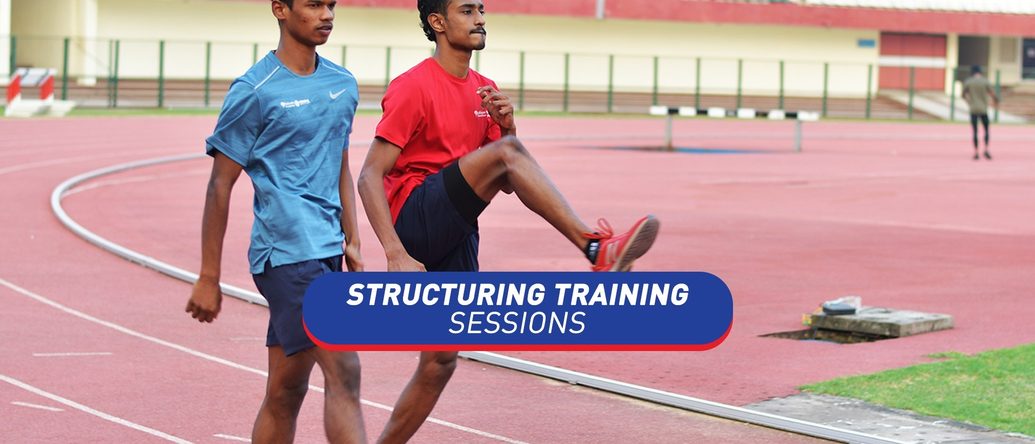How to Structure Training Sessions
Athletics have a deep-rooted history in the evolution of sports and culture. Although it originated from war and for means of survival, it evolved into sports in the 9th and 10th centuries B.C. in Greece. It includes the oldest sports such as running, walking, throwing, amongst many others. The popularity of athletics made its way to the first-ever Olympic game conducted. To educate about athletics and the training involved behind the scenes, we have come up with an ‘Athletics Development Series’ curated by the experts at RF Odisha Athletics High Performance Center.
Athletics have a deep-rooted history in the evolution of sports and culture. Although it originated from war and for means of survival, it evolved into sports in the 9th and 10th centuries B.C. in Greece. It includes the oldest sports such as running, walking, throwing, amongst many others. The popularity of athletics made its way to the first-ever Olympic game conducted. To educate about athletics and the training involved behind the scenes, we have come up with an ‘Athletics Development Series’ curated by the experts at RF Odisha Athletics High Performance Center.
The webinar series is aimed to cater to coaches, aspiring athletes, to enable them to learn more about the training and development of track and field athletes at an elite level. The first webinar series was conducted by James Hillier, Head Coach at Reliance Foundation Odisha Athletics HPC, who kickstarted with an introduction about structuring a training session.
Coach James began the webinar by discussing what a coach or athlete should look for in their target audience. This can be accomplished by identifying one’s origin of interest in athletics. The following reasons were discussed:
- Fun & enjoyment
- Learning new skills
- Mastering new skills
- Being good at it
- Gaining recognition
- Access to appropriate coaching
- Access to appropriate competitions
He then pointed out that despite all of these, there are athletes who drop out. Few reasons why they do could be:
- Boredom
- Lack of success
- Pressure from parents or coaches
- Loss of interest
- No access to good competitions
- Moved to a different sport
One way to avoid such dropouts is to make your training session effective. Coaches should keep the following points in mind while conducting sessions:
- Make it fun and fulfilling.
- The sessions should be progressive.
- Focus on success and improvements.
- Create an engaging and rewarding environment.
It is generally considered that athlete training should be organised in 7 stages called the Long Term Athlete Development Model (LTAD). The following are the stages of LTAD:
Stage 1: 0-6 years
- Active child stage
Stage 2: 6-9 years
- Have fun stage
Stage 3: 9-12 years
- Learning to train
Stage 4: 12-16 years
- Train to develop skills
Stage 5: 16-23 years
- Train to compete
Stage 6: 23+ years
- High-performance stage
Stage 7: 30+ years
- Fit for life
Coach James then outlined some considerations one should keep in mind while preparing for a training session. A few of them are as listed below:
- Number of athletes
- Age and their skills level
- Availability of equipment
- Progressing through the training units
- Quantifying training sessions
- Focusing on improvement than comparing results
Once this is in place, the stage is set for training. Training can be divided into three stages:
- Warm-up
- Main session
- Cooldown
Warm-up is training in disguise. This should be done such that it adds value to the main session by preparing the body and setting the right pace to go into the main training session. Warming up using the RAMP method is an effective way to start your training. Key components of using the RAMP method includes:
- Raise core temperature
- Activate around key joints
- Mobilisation of key muscle groups
- Potentiation or priming of muscles
When transitioning to the main session, the key components should include:
- Rehearse key movements required for the training session
- Allocate intense training at the start of the session
- Measure intensity of training with the volume of the session
- Combine multiple units of work into each session for young athletes
Cooling down relaxes muscles and stretches the body to recover from a high-intensity session. The cooldown period includes:
- Jogging
- Stretching
- Ice bath
- Review & reflect on a training diary
Coach James further demonstrated each phase of the warm-up with specific drills.
In case of queries or if you have any suggestions for webinar topics, please feel free to connect with us on Instagram/Facebook or email us at info@rfyouthsports.com









Your Comments